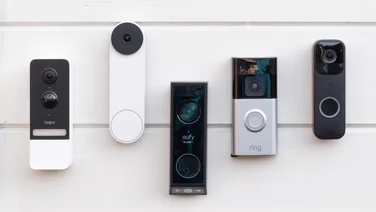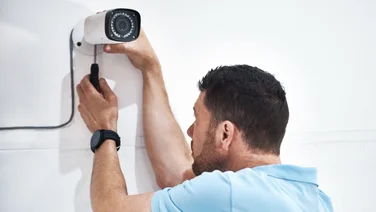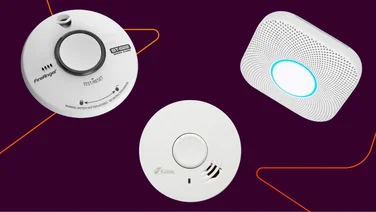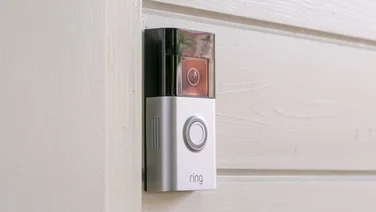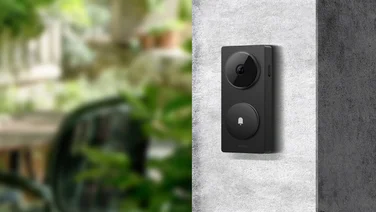To help us provide you with free impartial advice, we may earn a commission if you buy through links on our site. Learn more
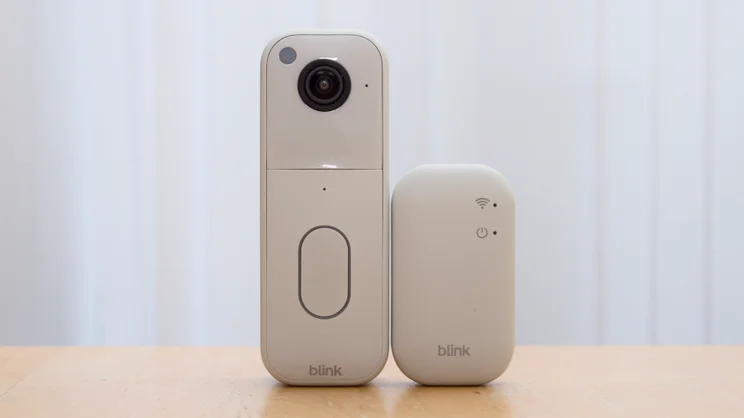
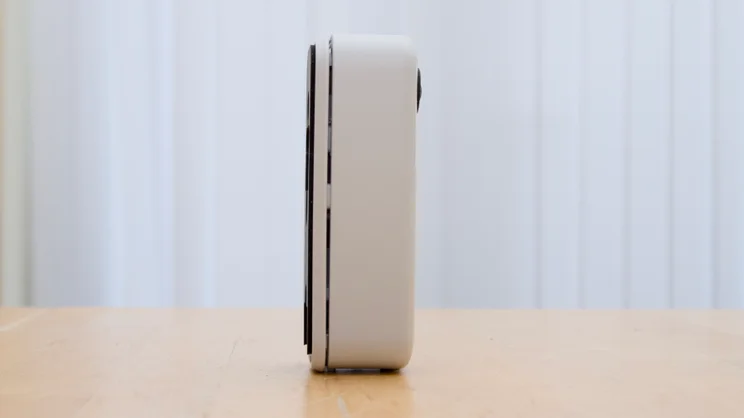
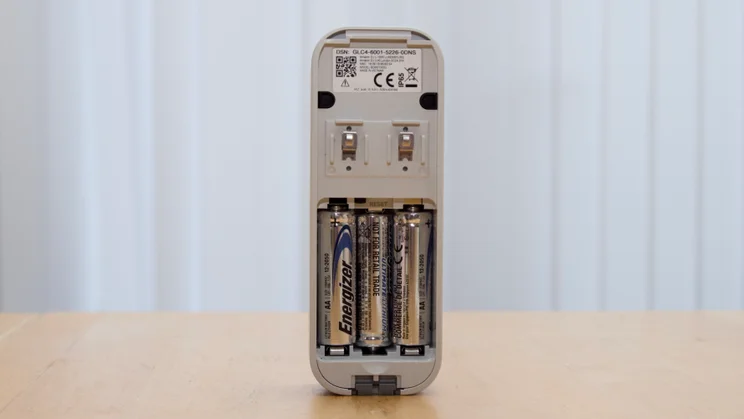
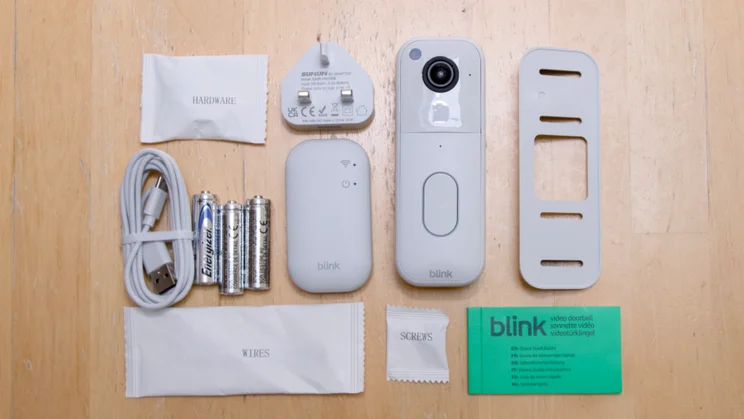
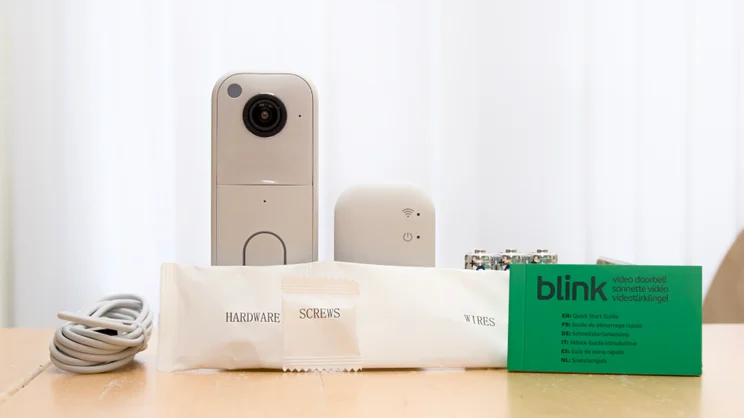
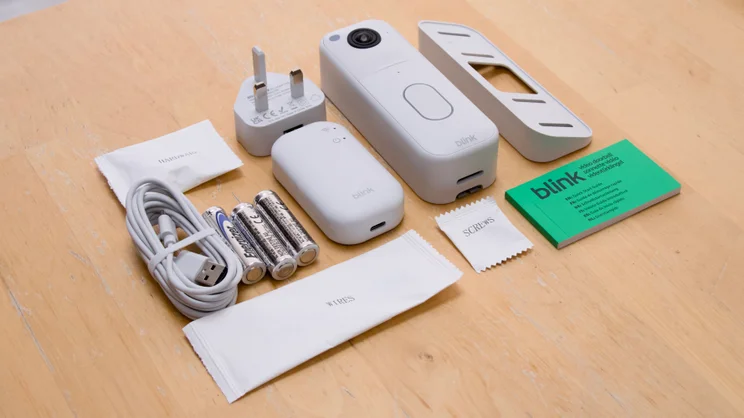
- Head-to-toe field of view
- Low cost, long battery life
- IP65 dust and water resistant
- Tricky to mount for beginner DIYers
- Backplate has no space for spare wires
- No chime in the box
I’ve been waiting for the Blink Video Doorbell 2nd generation for years now, hoping for big improvements and an easy recommendation. The first one was cheap – exceptionally so during Amazon’s regular sales events – but it never did quite make it to the top of my favourite smart doorbells.
While on paper, it looked a great buy and even allowed you to store video clips locally, avoiding the need to pay a monthly cloud subscription fee, its build quality was cheap and audio quality was poor. The second generation product certainly looks nicer and it comes with improved video quality, but alas build quality and audio remain an afterthought.
- After testing Blink’s new 2nd-generation video doorbell, we’ve found that it isn’t the best in its price range
- Image quality is good and you get a wider vertical field of view than the original Blink doorbell
- However, audio quality is still disappointing, capturing a lot of distracting background noise
- It must be linked with one of Blink’s Sync modules, and if you don’t have one already, this will cost you from £10 extra
Blink Video Doorbell (2nd generation): What do you get for the money?
The really impressive thing about this second-generation Blink doorbell, however, is that it is only £10 more expensive than the original when it first launched, way back in 2021. It’s £60, and that gets you the doorbell itself, all the hardware you need to screw it to your door/door frame, three lithium Energizer AA batteries and a Sync Module Core, which is used to relay the signal from the doorbell to your Wi-Fi Network.
You can purchase the doorbell on its own for £50, but it won’t work unless you already own one of Blink’s Sync Modules. And also note, it doesn’t come with its own chime module. The doorbell can, however, ring an audible chime via an Echo speaker, any other Alexa-compatible smart speaker or even a Blink Mini 2 security camera.
So what’s new here? First up, the design is easier on the eye. The front edges are much more rounded now and the button on the front is taller and thinner. However, the body of the doorbell is roughly the same size – it’s a bit deeper and fatter but despite what it looks like, it’s actually the same height as the old model.
The doorbell is now IP65 rated and its internals are sealed away from the elements with rubber gaskets – the original had no seals at all, and it was easy for water to get inside.
The camera has been upgraded, too, with a wider “head-to-toe” 150-degree field of view both horizontal and vertically and a sharper resolution of 1,440 x 1,440.






Elsewhere, you now get the ability to apply smart filters to motion-triggered video recordings. You can set the camera, for instance, to record only instances where people and/or vehicles are detected, instead of just general motion, potentially saving battery life.
And there’s a new feature to help you browse video clips from multiple cameras, automatically grouping motion-generated clips together based on when they were recorded.
The final improvement is that the 2nd generation Blink doorbell can be mains powered and connected to an existing chime – unlike the 2nd generation model, which could only be linked to a chime and powered by battery.






How easy is it to set up?
Like most video doorbells, the Blink Video Doorbell 2nd generation is super simple to set up – assuming you’re reasonably comfortable with wielding a screwdriver and (possibly) a drill.
If you’re sticking with battery power and an Echo speaker as a chime, you’ll be ready in a jiffy. Again, it’s all spelled out clearly in the instructions: first plug in the Sync Module Core and link it to your Wi-Fi network, then pair the doorbell with that and you’re ready to go.






It’s worth noting at this point that the Sync Module Core only supports 2.4GHz 802.11ac networks – but that shouldn’t pose a problem for most people. The 2.4GHz band may be more congested typically than 5GHz Wi-Fi, but it has a longer reach and you don’t need much bandwidth to view the compressed video this doorbell captures anyway.
After that, you’ll need to mount the doorbell. The Blink app guides you through the process step-by-step and there’s a paper template supplied to help you get everything straight and lined up.






If your front door is made of metal or UPVC, you might have some issues, too, since Blink does not supply adhesive pads in the box. That’s a surprising omission and something other doorbell manufacturers – Tapo among them – do include.
It’s also worth noting that it’s a lot trickier installing the doorbell if you want to connect it to your existing mains doorbell transformer and chime. That’s mainly because the cavity in the backplate isn’t big enough to stow loose cables and connectors in. I ended up having to wedge everything in and screw it down firmly, but the wires still created an unsightly gap because there wasn’t quite enough room.
What does it do well?
When it comes to image quality, the Blink Doorbell 2nd generation is a big improvement on the original. The new 150-degree lens gives you a full head-to-toe view of any visitor and the view goes almost down to the foot of the door for a decent view of your step. The resolution is much sharper, too, and it coped well with backlit subjects, balancing out the exposure nicely. There’s still plenty of compression, though – don’t expect smartphone-standard imagery.
I found the doorbell quite responsive when it comes to doorbell presses, ringing on the phone after an average 2.7 seconds, although that’s slower than the rivals such as the Tapo D235.
The ability to use your Echo speakers and even a Blink Mini 2 camera as a chime is a plus point as well, and the Blink app is elegant and simple. The Moments feature works nicely, grouping clips together from different cameras effectively.
I also like how easy it is to set motion activity and privacy zones. You simply tap the area in the camera frame that you don’t want notifications for and it turns grey.
Switch to privacy mode and it’s just as simple to block off parts of the frame so the camera doesn’t record there: simply draw a box around that area – you can set up to two of these box-shaped privacy zones.
What could it do better?
I wasn’t very impressed generally with the build and manufacturing quality of the Blink Doorbell 2nd generation, however. The seam where the glossy camera surround meets the matte plastic bottom half was uneven on my doorbell and the glossy part looked rippled, as if someone had melted it with a heat gun. I also found the button occasionally got stuck in its surround when pressed and didn’t fully pop back out. All round it just feels cheap – just not quite as cheap as the original.
But that’s not the only area for concern. As noted, the main mounting plate hasn’t been particularly well designed. I’ve already mentioned that there isn’t enough space for loose wires behind it.






The other big problem is that the screw mounting holes don’t give you any room for adjusting the position of the doorbell laterally or vertically once you’ve drilled your holes. That means you have to be millimetre perfect or your doorbell is just going to look wonky. Even with the supplied template a beginner DIYer is going to struggle with this – especially if they’re drilling holes in brick.
Motion alerts are sluggish – the doorbell took average of eight seconds in our tests for a notification to pop up at the top of the screen – and I also found that the person alerts didn’t fire 100% of the time, either. Occasionally, when I walked in front of the doorbell, it would only register general motion.
And while it’s good that you can power the doorbell via mains wiring now, it’s odd that you still need to install the batteries for it to function properly. Blink’s FAQ pages say connecting the doorbell to a transformer merely “offers supplemental power”, which to my mind seems to defeat the purpose of connecting it to the mains in the first place.
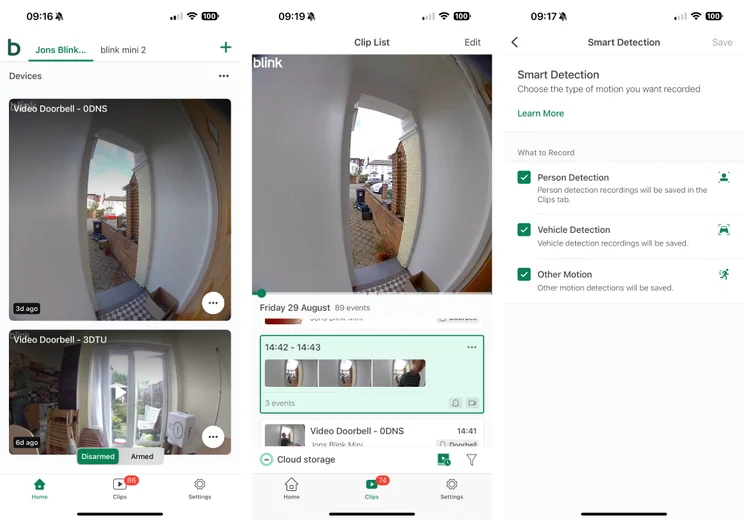
Audio quality reamins poor – like its predecessor, the Blink Doorbell generates a lot of background noise when you patch through to the Live View and it’s quite distracting. And although there’s under a second of audio lag when you’re speaking into your phone and sending audio to the doorbell, I found audio travelling in the opposite direction (from doorbell to phone) very laggy. It took nearly four seconds from my visitor speaking to me hearing it, which makes carrying out remote two-way conversations very tricky.
And, finally, I’m not really a fan of the way Amazon lures you in with cheap prices, then hits you with extra payments for storing and sharing video clips. To do this, you either have to pay a monthly subscription (from £2.50 per month for 1 device, or £8 per month for unlimited Blink devices) or buy a Sync Module 2 at £40, which brings the price up to £90.
The Tapo D235 is £90 and offers subscription free local video clip storage without being sneaky with the pricing.
Blink Video Doorbell (2nd generation): Should you buy one?
I think you can do a lot better than this 2nd-generation Blink Video Doorbell, despite the improved image quality and boost in features.
There’s a lack of attention to detail in the build quality all around, you don’t get adhesive pads in the box to help mount it to plastic and metal doors, and the backplate is a tricky thing to install neatly, particularly if you have wires to stow away behind it.
With no chime supplied in the box, you’ll need to have at least one Alexa-enabled speaker running if you want audio alerts to ping inside your house. And the requirement to have batteries installed, even if a mains transformer is connected, is just plain weird.
Undoubtedly, the Blink Video Doorbell (2nd generation) will come down in price during Amazon’s sales events, and then I think I’d be able to recommend it for those wanting to dip their toe in the smart-doorbell waters, but that would still be a reluctant endorsement – and no doubt other doorbells would fall in price at the same time, too.
Our top recommendation, therefore, remains the Tapo D235. It may look more expensive at £90, but it’s a more complete product, comes with a chime in the box and the ability to store video clips locally, without having to buy a secondary piece of hardware. It’s still the best cheap video doorbell and our favourite overall.



